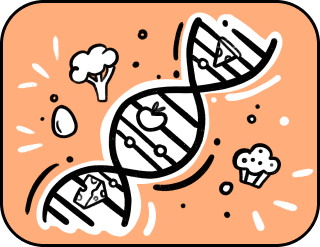Fakes vs. truth: a show with a twist and an unpredictable finale
Welcome to a culinary battle, where the masters of serving up hot-button news face off. Two chef titans will clash to determine who can better cook and serve information. Who will win and become the ruler of our minds, and who will end up a culinary loser? It’s time to find out.
The air is already thick with spices and sizzling news. The rivals are sharpening their knives and inspecting their ingredients. The show is about to begin!
First to showcase his skills is the culinary master, Fake. Every single person has tasted his dishes: a series of articles on life on the Moon, the film “Arrival of a Train”, the cure-all pill, “The German Factory of Corpses”, Hillary Clinton’s alleged ties to a secret pedophile cult, the horror story of the destructive Brain virus, and, of course, his signature dish, “The End of the World on 12.12.12.”
Wild creations by Master Fake are a culinary delight for journalistic circles. Fake’s creations are particularly popular among journalists. Bloggers and content creators frequently turn to the maestro for inspiration. The dishes crafted by this brand chef are always vibrant and spicy, irresistibly appetizing and attractive.
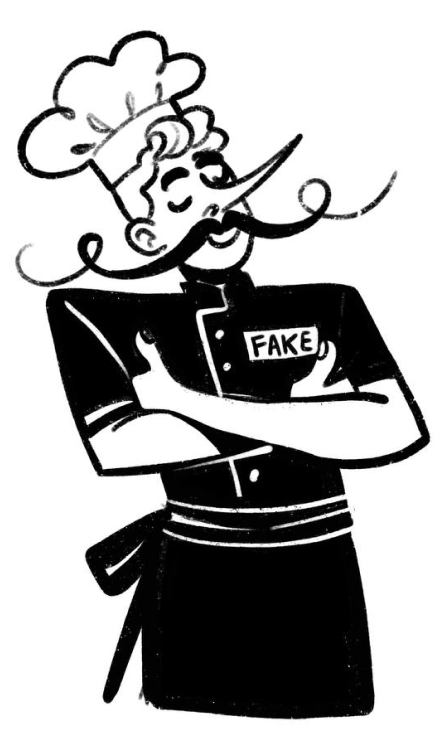

Now, the renowned Master Fake is ready to present his latest creation, “Duck with a Whiff.” The maestro admits he developed this recipe specifically to astonish consumers and test their appetite for information of all kinds.
The core ingredients of this dish are accessible to any PR manager. To prepare “Duck with a Whiff,” you’ll need:
- 20 grams of facts
- half a bucket of speculation
- 10-12 kilograms of unproven myths
- 200 tablespoons of manipulation (liquid political technology concentrate works well for an extra kick, depending on personal taste)
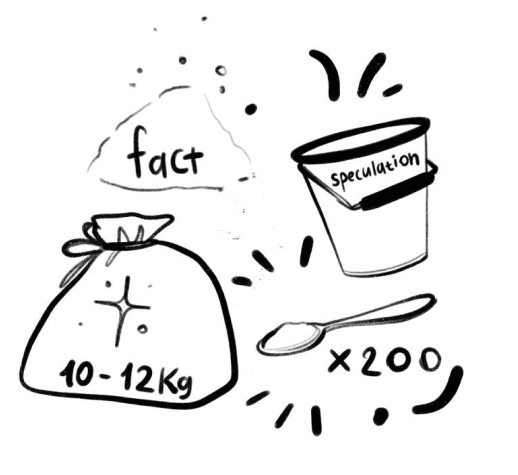
Cooking Process:
Take a voracious duck, wash it thoroughly to remove any bitter aftertaste, season with salt and pepper, and place it at the heart of the news story. The dish’s headline must be generously coated with Hellfire Doomed Hot Sauce—otherwise, the duck will be bland and ordinary.
The garnishing must adhere to culinary standards with precision:
“A new method of duck hunting using acorns has been discovered.”
“A vampire goose is haunting the area, scaring residents. Authorities refuse to act.” (Be sure to place the words “Authorities refuse” in this exact order.)
“The secret to longevity has been found! Don’t share it with anyone who owns ducks.”
The recipe for “Duck with a Whiff” first appeared in a French agricultural publication in 1776. Over time, it has evolved, acquiring various seasonings, but its main ingredient remains timeless—these news stories reek of intrigue and are irresistibly consumable.
The audience is ecstatic! Master Fake has just demonstrated that people will consume anything if it’s prepared and presented well. This seems like a victory!
But wait! The second chef enters the stage to hesitant applause from the audience—Chef Antifake. Once celebrated for his invention of safe food, detox programs, and antidotes, his culinary approach is slowly winning over those who’ve had their fill of fake dishes.
Antifake bows gracefully to the audience and places something round and gray on a large plate. The audience holds its breath in anticipation… Is that… a brain? Who would have guessed!
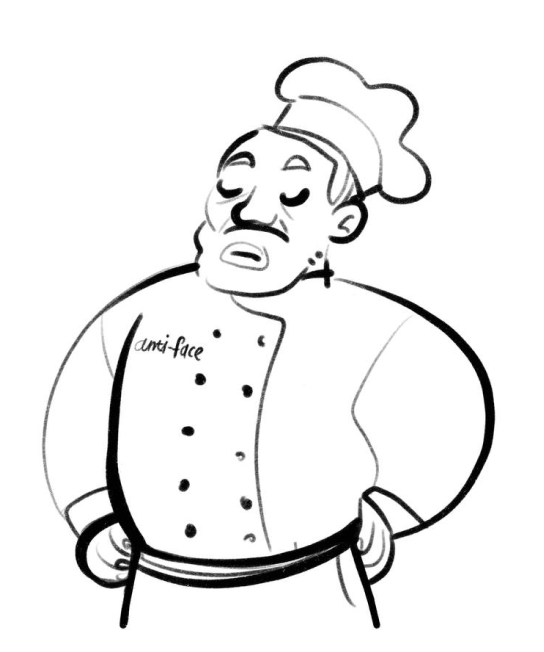
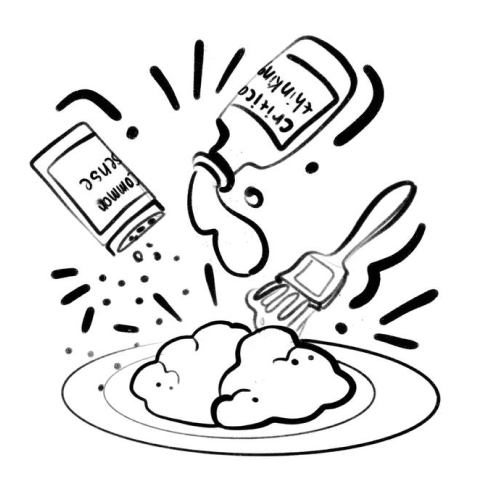
Antifake generously coats the brain with critical thinking, slathers it with scientific facts, and adds a healthy dose of common sense.
Surprisingly, when juxtaposed with such a dish, Master Fake’s “Duck with a Whiff” loses its appeal—it appears less juicy, and the dirty thoughts of its creators become glaringly obvious.
It seems Master Fake has taken his usual approach—when the consumer craves sensation, any duck will do. But really, what critically thinking person would believe that wild ducks can be taken down with acorns?
Trust and societal norms play a crucial role in every fake dish. Perhaps that’s why Master Antifake chose to present the brain as the main course.
On this captivating note, the first round of the culinary duel comes to an end. Both maestros have showcased their skills, making the choice between fake and antifake technologies even harder!
Master Fake and Antifake are already anticipating the next stage. Will they manage to surprise the audience even more?
So, do both culinary maestros of the great kitchen know how to prepare fresh voices?
Chef Fake steps forward to present yet another mix of fabrications. What enticing dishes he has!
“The Eiffel Tower will be dismantled, and the familiar mechanical clock on Big Ben will be replaced with a modern digital version.”
“Piranhas have been spotted in the Gulf of Finland, and flying penguins have appeared in the Moscow metro.”
“Mona Lisa is actually a man, and he’s just over 20 years old.”
What a tantalizing aroma! What can we say? Mr. Fake knows his craft!
He created these incredible masterpieces with the help of his loyal companion—artificial intelligence. AI is a bright and vibrant character, far superior to the dull assistants of Chef Antifake. This is true intelligence! This is creativity!
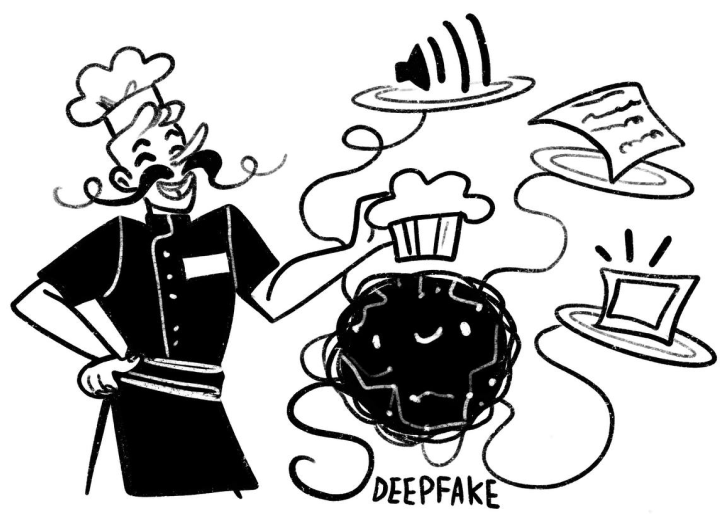
Master Fake proudly introduces his assistants, chief among them—Deepfake. Deepfake reproduces familiar faces, combines elements, and creates entirely new, unique visual and audio masterpieces. Deepfake… what a word! Can’t sing? You will! Can’t dance? You will! Didn’t want to speak? You’ll start talking! How is it possible that you didn’t say that?
Under the guidance of his chef, Deepfake immediately presents several dishes for tasting:
“A photo of an abandoned McDonald’s restaurant near the Chernobyl Nuclear Power Plant surfaced on social media. Some Western users took the image at face value.”
“An Algerian fisherman caught the real King Kong—a previously unseen gorilla-fish hybrid. Photos of the creature went viral on social media.”
What could possibly be wrong with these dishes? They’re quite well-prepared. Apart from surprise, smiles, or occasional puzzlement, they don’t cause any side effects for the consumer. All Deepfake’s creations are a great way to amuse, entertain, and attract attention. However, with some of its powerful dishes, one could easily tarnish someone’s reputation—or even yours, if someone decides to insert your face into a compromising scene.
But wait, why speculate?
Who would mind a digital rapper Eminem appearing on their TV screen while he’s physically elsewhere? Deepfake allows you to choose your favorite actor for the lead role in a movie you’re watching. For instance, imagine Jim Carrey giving you chills in “The Shining” instead of Jack Nicholson.
“Let there be Jim!!!” chants Deepfake.
It seems ready to present another dish! What’s this? Deepfake takes initial voice data, compresses it with an Encoder device until it’s as compact as small pies, and places it into a deep bowl. Then it adds some artificial intelligence peas and pops it into the oven. Afterward, using a Decoder, it extracts and presents the freshly crafted sound. Bon appétit!
The audience bursts into applause! Is that not enough?
Deepfake unveils another upgraded recipe—Eleven Labs. It places an audio recording of someone else’s voice into a new container, invents a text, and voilà—the voice is ready to debut and even deliver intelligent thoughts. No extra hassle, just simplicity and ease. This recipe comes with an additional bonus—instructions in two languages. Experiment with the new flavor!
This is too much! Deepfake has become the new darling of the audience! The newspaper hoax is a thing of the past—here he is, the future king of all fakes!
Oh no, it seems Maître Antifake has something to say in return.
He confidently steps onto the stage, holding not one, but several dishes this time!
Like any trick, deepfakes have a dark side—they’re used to deceive, blending fiction with reality. And they carry a smell akin to spoiled truffle: expensive at first glance but incapable of preventing poisoning. All these video and audio fantasies of neural networks take a toll on the psyche and, of course, the wallet. But such is the price of haute cuisine—if you love to eat, you must count the calories.
Maître Antifake presents his first dish—FVDS technology for detecting video fakes. It’s guaranteed to uncover fake ingredients and recipe inaccuracies! This system harnesses the powerful capabilities of computer vision to evaluate every frame in detail.
Using neural “spices,” FVDS meticulously examines the unique features of a human face, much like a sommelier evaluating wine, and detects any signs of synthetic generation. If the technology identifies a counterfeit face, it highlights it with a bold red frame: “Hey, this isn’t a real dish!”
The chef proudly demonstrates his masterpiece to the audience. Yet the crowd seems cautious, hesitant to tarnish the vibrant fireworks of emotions that Maître Fake had delivered.
Someone from the crowd finally dares to taste Antifake’s dish. Well, it’s a worthy result.
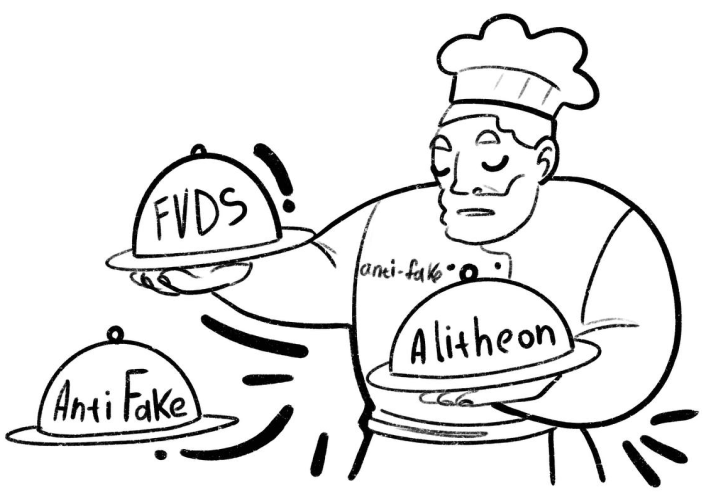
The chef of truthful cuisine now presents his second course—Alitheon, a startup that verifies product authenticity through photographs. Just take a picture with a camera, and the item’s unique “fingerprint” is entered into a special database. Later, when someone else snaps a photo of the same item, object, or product, the system—like an authoritative food critic—will check and confirm its authenticity.
Details matter greatly: color, texture, packaging, and even specialized QR codes that indicate authenticity. However, if the image is out of focus, the system might mistakenly identify the original as a fake—like an underseasoned dish. A second “preparation” can save the day: take another clear photo, and the issue is resolved.
The audience seems to be perking up! They eagerly sample Antifake’s dishes and share their impressions. Here it is—the elegant path to truth!
But that’s not all. It appears Maître Antifake is firmly determined to claim victory in this culinary battle!
He presents the audience with yet another dish, simply named AntiFake. This technology knows how to perfectly season an audio recording so it remains recognizable to humans but becomes a true enigma for artificial intelligence! By slightly altering the original “recipe” of the audio signal and adding minor distortions, the human ear won’t notice a difference, but for AI, it becomes an obstacle to imitation.
Now the voice can confidently be called a unique dish. Generating or replicating the original becomes impossible. Currently, the algorithm carefully guards short “portions” of speech, but in the future, it promises to expand its culinary horizons to include longer recordings and even musical works.
The audience is thrilled! They eagerly grab the new technology and install it on their phones. AntiFake has demonstrated incredible results: 95% protection against “culinary voice fakes”!
But what’s this? A commotion rises from the back rows. It seems someone is confidently walking onto the stage—it’s Prover, the golden champion of all culinary battles.
The audience greets the key assistant of Maître Antifake with a standing ovation. And why not? Prover is the first technology in the world to detect fakes, forged in the crucible of blockchain! This chef is more reliable than the sturdiest fastener.
Prover pulls out a phone and begins a video recording—point, capture, verify. While recording the video, a request is automatically sent to obtain a web code on the blockchain, where information about the date and time of the request is stored, and a unique swipe code is generated. Upon completing the recording, the video file’s hash, along with information about the date and time of completion, is also recorded on the blockchain. Any forgery is impossible.
The crowd roars with excitement! This is the dish they’ve been waiting for! No more traces of editing! Preparing video evidence for KYC procedures, insurance property assessments, and other critical situations can now be done independently. Proving handshakes, remote reports, events, authorship, and other significant facts can be accomplished in no time on any kitchen—no special equipment needed!
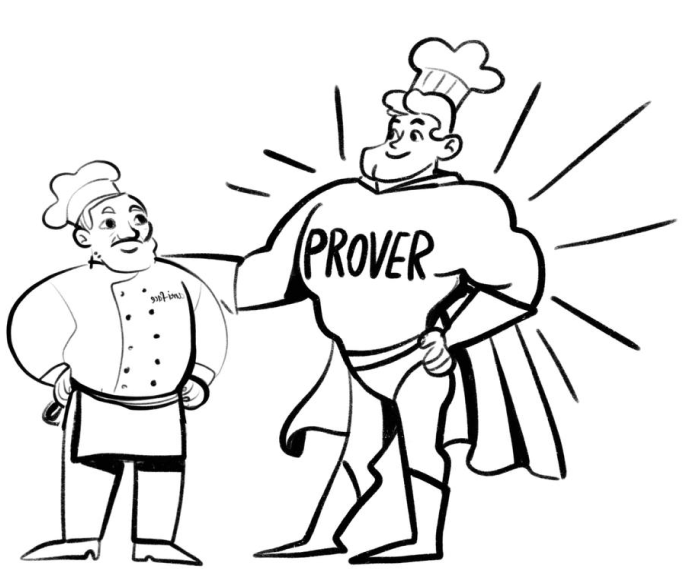
Prover on Blockchain is the ultimate absorber of any dish with a hint of deceit.
The culinary show has ended, yet we couldn’t determine a winner.
Lies are always attractive and, let’s face it, sometimes necessary. Is it really so bad to believe in Santa Claus descending from the mountains to bring us joy? Fakes will always seem tastier because they hit the key buttons—feelings and emotions.
Information that aligns with our beliefs is easier to accept. The more often we hear something, the more likely it is to become true in our minds. We trust those we know. If a piece of news comes from a well-known blogger or a reputable brand, it automatically seems credible.
But all this pseudo-truth is highly caloric. The master chefs of the fake kitchen endlessly feed us fabricated facts, news, and events until we become as bloated as overfed oxen.
The conclusion? Consume wisely.
We’ve discovered new laws of the Universe in your pocket. By the way, there are many forgotten things in the Universe too.
Thank you!


